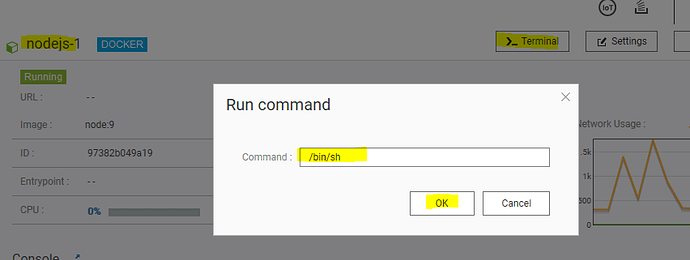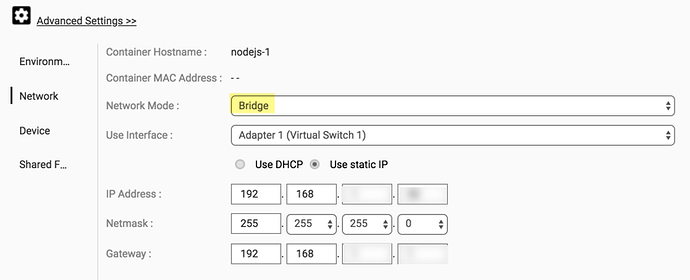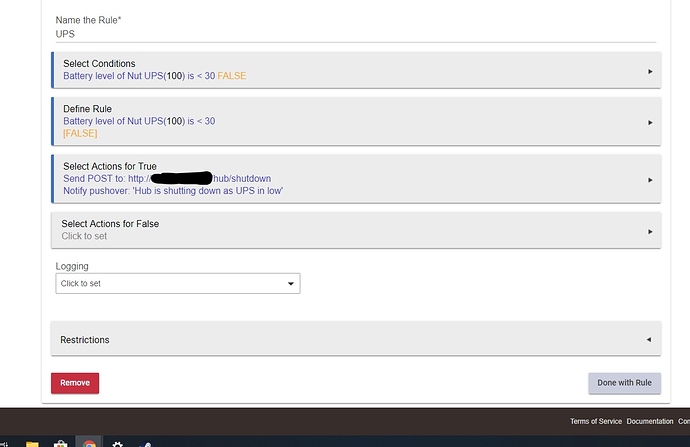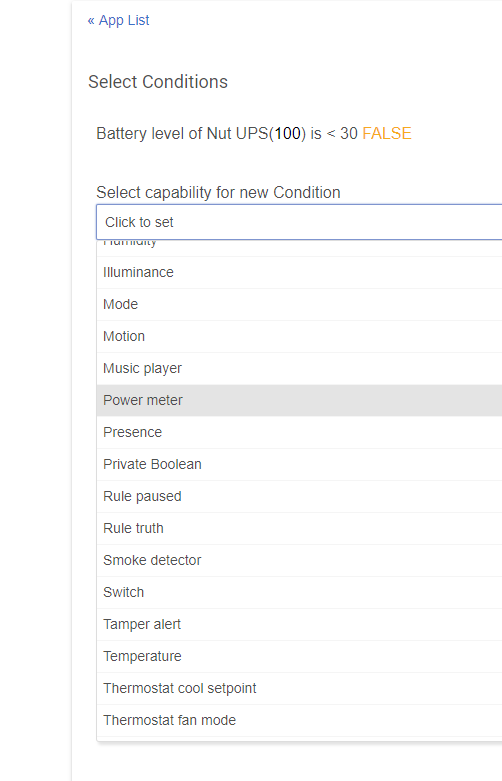For those of you with a NAS, especially QNAP brand, I wanted to share ways that I am utilizing my NAS for various integrations. I don't have any familiarity with other NAS brands like Synology but I understand that many support Docker containers so these may be possible on those devices as well. Feel free to comment with other ways you are using your NAS for HE integrations.
- UPS Integration - I have a UPS connected via USB to my NAS. When power outages occur, I wanted the ability to automate shutting down of devices within my home via my Web Power Switch as well as shut down my multiple HE hubs gracefully. This integration polls the QNAP NUT Server for status on a set interval. Huge thank you to @guyeeba for posting a RPi driver on the community that inspired me to create my own version for use with my NAS and @stephack for helping me test this driver! You can find the driver code and instructions here:
NUT-UPS-Monitor/README.md at master · HubitatCommunity/NUT-UPS-Monitor · GitHub - Container Station Containers:
- NodeRed - there are several posts on this Community on how to setup NodeRed on RPis such as this one but via Container Station, I downloaded the NodeRed image from Github and utilize that.
- Every night at 4 AM a flow downloads the HE backups of my 3 hubs and puts it in a folder on my NAS. Export of this flow can be found here.
- When setting up your NodeRed container be sure to create a Shared Folder so that NodeRed has access to upload the files:
- When setting up your NodeRed container be sure to create a Shared Folder so that NodeRed has access to upload the files:
- Connection to the HE web socket to log events into InfluxDB and Grafana as well as SQL server
- Monitor Performance of hubs which you can read more about in this thread. That solution was checking the installed apps page which didn't work for me because the number of apps varies greatly from hub to hub. I instead use how long it takes to load the System Events list.
- Query my QNAP MySQL database once a day to check if a battery powered device hasn't updated in the last 24 hours and if one found send me a notification. Since I am logging all event data in MySQL, I have a "devices" table with a last updated timestamp that I keep updated based on events being inserted.
- Every night at 4 AM a flow downloads the HE backups of my 3 hubs and puts it in a folder on my NAS. Export of this flow can be found here.
- Homebridge - allows me to control devices via Apple HomeKit thanks to @dan.t's awesome plugin
- InfluxDB - database for NodeRed
- Grafana - visualization engine of InfluxDB data
- NodeJS - runs @gabriele's code to update the Alexa cookie with @ogiewon's Alexa TTS Manager
- NodeRed - there are several posts on this Community on how to setup NodeRed on RPis such as this one but via Container Station, I downloaded the NodeRed image from Github and utilize that.
I am happy to answer any questions you may have but I wanted to foster ideas on how to better utilize features on your NAS.





 Just want to rule out it's not a version problem I'm having.
Just want to rule out it's not a version problem I'm having.



